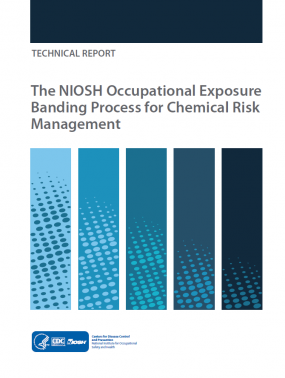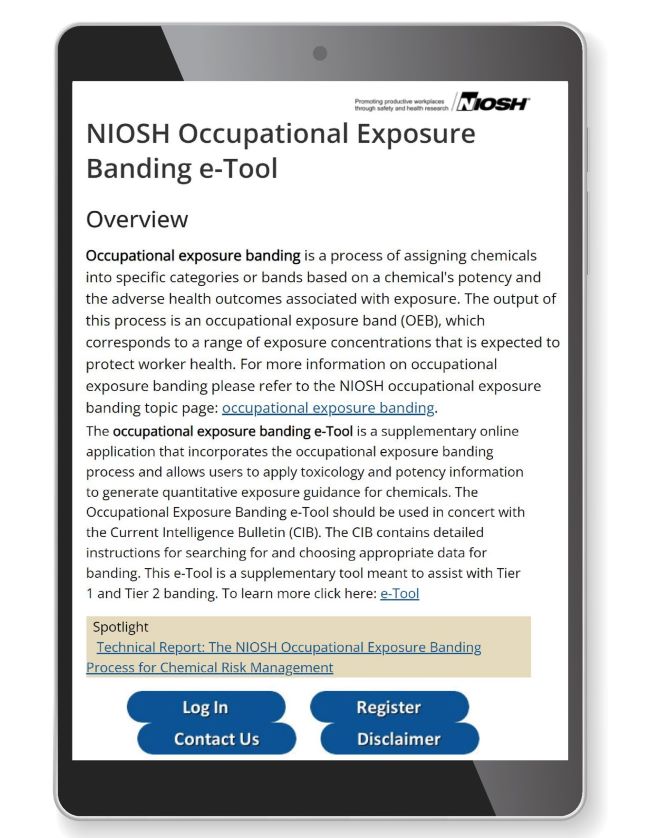Occupational Exposure Banding
Only a small fraction of the chemicals in commercial use have occupational exposure limits (OELs). OELs provide specific guidance on how much of a chemical a worker can be exposed to over a period of time. They are developed by authoritative organizations like NIOSH to prevent adverse health effects from workplace exposures.
Without an OEL, it can be challenging for employers and occupational safety and health professionals to determine the best way to protect workers from harmful exposure to chemicals. For chemicals that lack OELs, occupational safety and health professionals can use the NIOSH occupational exposure banding process. It allows users to quickly and accurately assign chemicals into specific categories (bands). Management can then make timely decisions based on the best available scientific information.


Approach
Users apply hazard-based data (such as studies on human health effects or toxicology studies) to calculate which of five “bands” is appropriate. Bands are based on a chemical’s toxicological potency and the adverse health effects associated with exposure to the chemical. Each occupational exposure band (OEB), A-E, has an exposure limit range. Users can band a chemical manually using the NIOSH technical document or the occupational exposure banding e-Tool.
The NIOSH occupational exposure banding process uses a three-tiered approach. This allows a variety of people to use the exposure banding process in many different situations. The appropriate tier to use for a specific banding situation depends on the quantity and quality of the available data. The training and expertise of the user also factors in.
- Tier 1 requires relatively little information and only modest specialized training. It provides a quick summary of the most important health effects associated with exposure to the chemical of interest. Users can quickly identify extremely toxic chemicals that should be considered for substitution or elimination.
- Tier 2 requires the user to examine publicly available databases and extract relevant toxicological data. This information is entered into a banding algorithm.
- Tier 3 employs expert judgment to critically evaluate experimental data and discern toxicological outcomes.
After completing the OEB process, users must determine a way to measure whether workplace exposures fall within that range. They must also decide what controls to put in place if the results exceed the limit. OEBs can also be used alongside control banding.
Webinar
Lauralynn Taylor McKernan, ScD, CIH, explains the NIOSH occupational exposure banding methodology and the impact it could have on the occupational safety and health field.
Contact
For additional information, contact nioshoeb@cdc.gov
